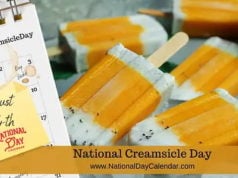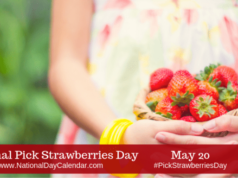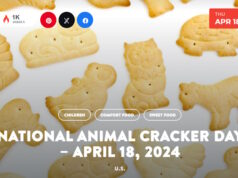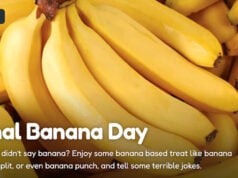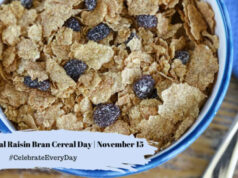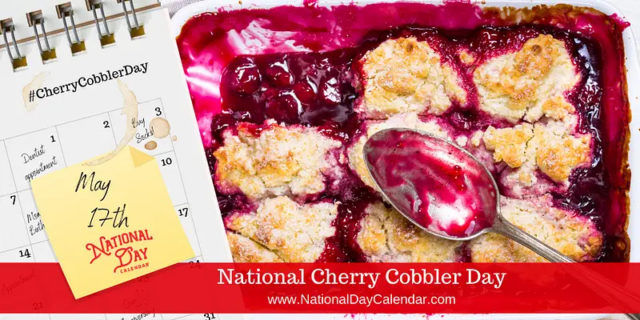
National Cherry Cobbler Day is dedicated every May 17th to the delicious tart dessert that many enjoy with ice cream.
In the United States, cobbler refers to a variety of dishes that consist of a fruit filling (cherry being a popular choice ) covered with a batter, biscuit or pie crust that is then baked. Some cobblers have both a top and bottom crust.
- Cobblers originated in the early British American colonies. It was because of the lack of suitable ingredients and proper cooking equipment that the English settlers were unable to make their traditional suet puddings, so to improvise, they covered a stewed filling with a layer of uncooked biscuits or dumplings.
- A cherry cobbler differs from a crisp as a cobbler lacks oatmeal. Sometimes the cobbler is topped with a scoop of vanilla ice cream!
- The origin of the name cobbler, recorded from 1859, is uncertain: it may be related to the archaic word cobeler, meaning “wooden bowl”.
- The cobbler takes its name from the biscuit dough crust on top – it is rough looking or ‘cobbled.’ It originated in the U.S. sometime in the early to mid 19th century.
- Did you know that the reason Broadway Street in New York City shifts west at E. 10th street is because a cherry tree once sat there?
- Cherries are a stone fruit that belongs to the rose family. They are related to plums and more distantly to peaches and nectarines. Cherries have been enjoyed since the Stone Age.
- The word “cherry” comes from the Turkish town of Cerasus. And not surprisingly, Turkey, the country that named cherries, is the largest grower of cherries in the world.
- Cherries were a prized food in China dating back to 600 BC fit only for royalty.
- Pliny suggested that Roman General Lucullus introduced cherries to Europe around 74 B.C. Lucullus is said to have committed suicide when he realized he was running out of cherries.
- The English colonists brought cherries to North America in the 1600’s.
- While cherries have long been a popular dessert fruit, cherries were used for their medicinal purposes in the 15th and 16th centuries. Today, that belief is even stronger as there are 60 national research studies confirming the healthy aspects of cherries. The Cherry Marketing Institute posts all the health benefits here.
- There are more than 1,000 varieties of cherries in the United States, but fewer than 10 are produced commercially.
- Michigan has over 35,000 acres of tart cherry trees and grows almost 75% of the tart cherries produced in the United States. The Great Lakes State has almost 4 million cherry trees, producing about 150-200 pounds of tart cherries on each tree. In an average year, 165 million pounds will be produced in Michigan.
- Traverse City, Michigan, is known as the Cherry Capital of the World.
- Door County, Wisconsin, is nicknamed Cherryland USA.
- There are about 7,000 cherries on an average tart cherry tree, and it takes about 250 cherries to make a cherry pie, so each tree potentially could produce enough cherries for 28 pies.
- At one time it was against the law to serve ice cream on cherry pie in Kansas.
- Americans consume an average of 1.5 pounds of cherries each year.
- A Cobbler is also a drink, which probably predates the fruit cobbler pie.
- A cobbler usually consisted of whiskey or rum with fruit juice and/or sugar, garnished with mint and/or citrus.
Sources:




